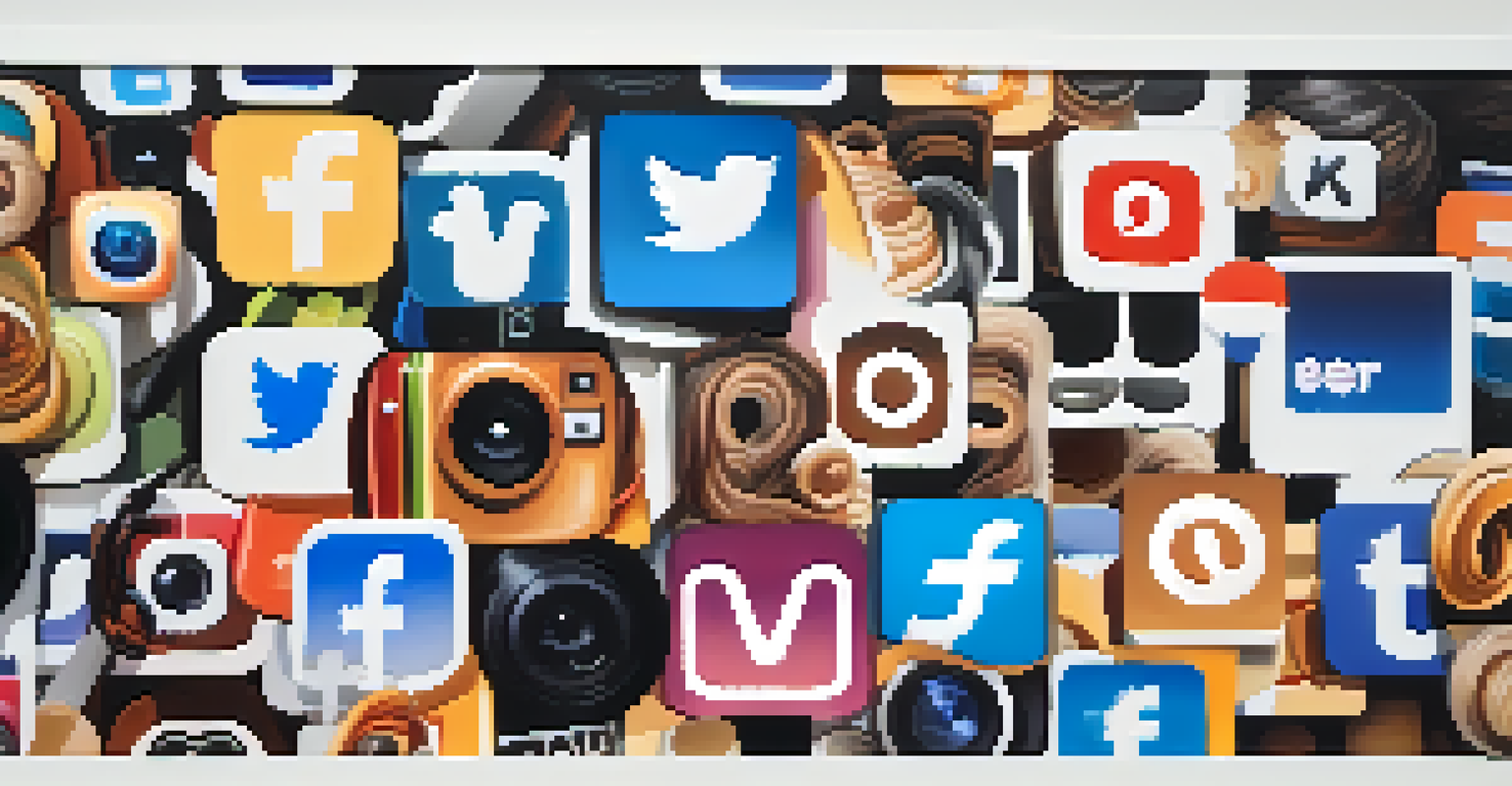Diversity in Film: The Impact of Global Movements on Casting

Understanding Diversity in Film and Its Importance
Diversity in film refers to the inclusion of various identities, backgrounds, and experiences in storytelling. It's crucial because it allows audiences to see themselves reflected on screen, which can foster empathy and understanding. When diverse voices are represented, the stories told become richer and more nuanced, moving beyond clichés and stereotypes.
Diversity is not a set-aside program; it is a strategy that can enhance creativity and innovation.
For instance, a film that features a range of cultures can introduce viewers to new perspectives and ideas that they might not encounter in their daily lives. This representation not only enriches the narrative but also encourages discussions about societal issues, bridging gaps between different communities. Ultimately, diversity in film paves the way for a more inclusive and understanding society.
Moreover, as audiences become more aware of and demand diversity, filmmakers are recognizing that inclusivity is not just an ethical obligation but also a smart business decision. Diverse casts can attract wider audiences, leading to greater box office success and cultural relevance. This shift is reshaping the industry, making it essential for filmmakers to consider diversity in their casting choices.
The Rise of Global Movements Advocating for Inclusion
In recent years, global movements advocating for social justice and equality, like Black Lives Matter and #MeToo, have significantly influenced the film industry. These movements have sparked widespread conversations about representation and the need for authentic storytelling. As a result, filmmakers are increasingly held accountable for their casting decisions and the narratives they choose to tell.

For example, the push for increased representation of women and people of color has led to more inclusive casting in major films and series. This shift is evident in projects like 'Black Panther,' which showcased a predominantly Black cast and celebrated African culture, breaking barriers in Hollywood. The success of such films demonstrates the audience's hunger for diverse stories and characters.
Diversity Enriches Storytelling
Incorporating diverse voices in film leads to richer narratives that foster empathy and understanding among audiences.
Additionally, these movements have encouraged industry professionals to advocate for change from within. Filmmakers, actors, and writers are now more vocal about the importance of representation, leading to initiatives that aim to support underrepresented talent. This collective effort is fostering a more equitable landscape in film, where diverse voices can thrive.
How Social Media Amplifies Diverse Voices
Social media has become a powerful tool for amplifying diverse voices in the film industry. Platforms like Twitter and Instagram allow creators and audiences to share their experiences and advocate for change in real-time. This democratization of content has made it easier for marginalized groups to connect, share their stories, and demand representation.
The stories we tell can change the world, and they can only do so when all voices are heard.
For instance, hashtags like #OscarsSoWhite have brought attention to the lack of diversity in award nominations, prompting industry leaders to take action. This grassroots movement has led to changes in the Academy’s voting membership and encouraged more films that reflect diverse perspectives. Social media serves as both a platform for advocacy and a space where audiences can express their desires for better representation.
Moreover, social media campaigns often highlight independent filmmakers who might not have the backing of major studios. By showcasing their work, these creators can gain visibility and support from a wider audience, leading to opportunities that may have otherwise been out of reach. This shift is vital for fostering a diverse array of voices in film, ultimately enriching the storytelling landscape.
The Role of Film Festivals in Promoting Diversity
Film festivals play a significant role in showcasing diverse talent and stories that might otherwise go unnoticed. Events like Sundance, Toronto, and Cannes have dedicated programs that spotlight films made by underrepresented creators. These festivals serve as a platform for filmmakers to present their work to industry professionals and audiences alike, facilitating valuable connections.
For example, films such as 'The Farewell' gained recognition at festivals before making their way to a wider audience. These events not only celebrate diverse storytelling but also create opportunities for filmmakers to discuss their work and the importance of representation in film. This visibility is crucial for encouraging studios to invest in diverse projects.
Social Movements Drive Change
Global movements for equality are holding filmmakers accountable for representation, resulting in more inclusive casting choices.
Additionally, many festivals are now implementing initiatives aimed at increasing diversity among participants and audiences. By focusing on inclusivity, they are helping to cultivate a more equitable film industry. As these festivals continue to promote diverse voices, they contribute to a broader cultural shift towards acceptance and understanding in cinema.
The Impact of Streaming Services on Casting Diversity
The rise of streaming services like Netflix, Amazon Prime, and Hulu has reshaped the landscape of film and television, creating new avenues for diverse casting. These platforms have a global reach and cater to a broad audience, allowing for stories that reflect various cultures and experiences. As a result, streaming services are increasingly investing in original content that prioritizes diversity.
For instance, shows like 'Master of None' and 'Never Have I Ever' highlight the experiences of characters from different cultural backgrounds, breaking traditional molds in storytelling. These series not only resonate with specific audiences but also introduce broader viewers to unique perspectives. The success of such diverse content encourages streaming platforms to continue exploring varied narratives.
Furthermore, the competition among streaming services has led to a surge in demand for original programming. This has created opportunities for diverse talent behind and in front of the camera, as platforms aim to differentiate themselves by offering unique and inclusive stories. As a result, we are witnessing an exciting era in film and television, where diverse casting is becoming more commonplace.
Challenges to Achieving True Diversity in Casting
Despite the progress made in recent years, challenges remain in achieving true diversity in film casting. One significant hurdle is the persistence of typecasting, where actors are often pigeonholed into specific roles based on their ethnicity or background. This limits opportunities for actors and restricts the range of stories that can be told.
Additionally, many production companies still prioritize financial gain over authentic representation, leading to a reliance on familiar formulas and safe casting choices. This can stifle creativity and prevent truly diverse narratives from emerging. For instance, while a film may feature a diverse cast, it might still revolve around stereotypical plots that don't reflect the complexity of their experiences.
Streaming Services Expand Opportunities
The rise of streaming platforms is creating new avenues for diverse narratives, allowing underrepresented talent to shine in the industry.
Moreover, there is a need for ongoing education and awareness within the industry about the importance of diversity. Filmmakers, producers, and casting directors must recognize their role in shaping narratives and actively seek to diversify their projects. By confronting these challenges head-on, the film industry can continue to move toward a more inclusive future.
Looking Ahead: The Future of Diversity in Film
The future of diversity in film looks promising, as ongoing conversations and movements continue to push for change. As audiences demand more inclusive content, the industry is slowly adapting to these expectations. This shift is not only beneficial for representation but also opens up new creative possibilities for storytelling.
As more filmmakers from diverse backgrounds gain access to funding and resources, we can expect to see a wider range of narratives that challenge the status quo. This is essential for creating a film landscape that accurately reflects the world we live in, filled with diverse voices and experiences. The incorporation of technology and social media can further enhance this movement, connecting creators and audiences in unprecedented ways.

Ultimately, the success of diversity in film will depend on a collective commitment from all stakeholders in the industry. By embracing inclusivity and supporting underrepresented voices, we can foster a cinematic environment that celebrates diversity and authenticity. The journey towards true representation is ongoing, but the momentum is building, and the possibilities are limitless.